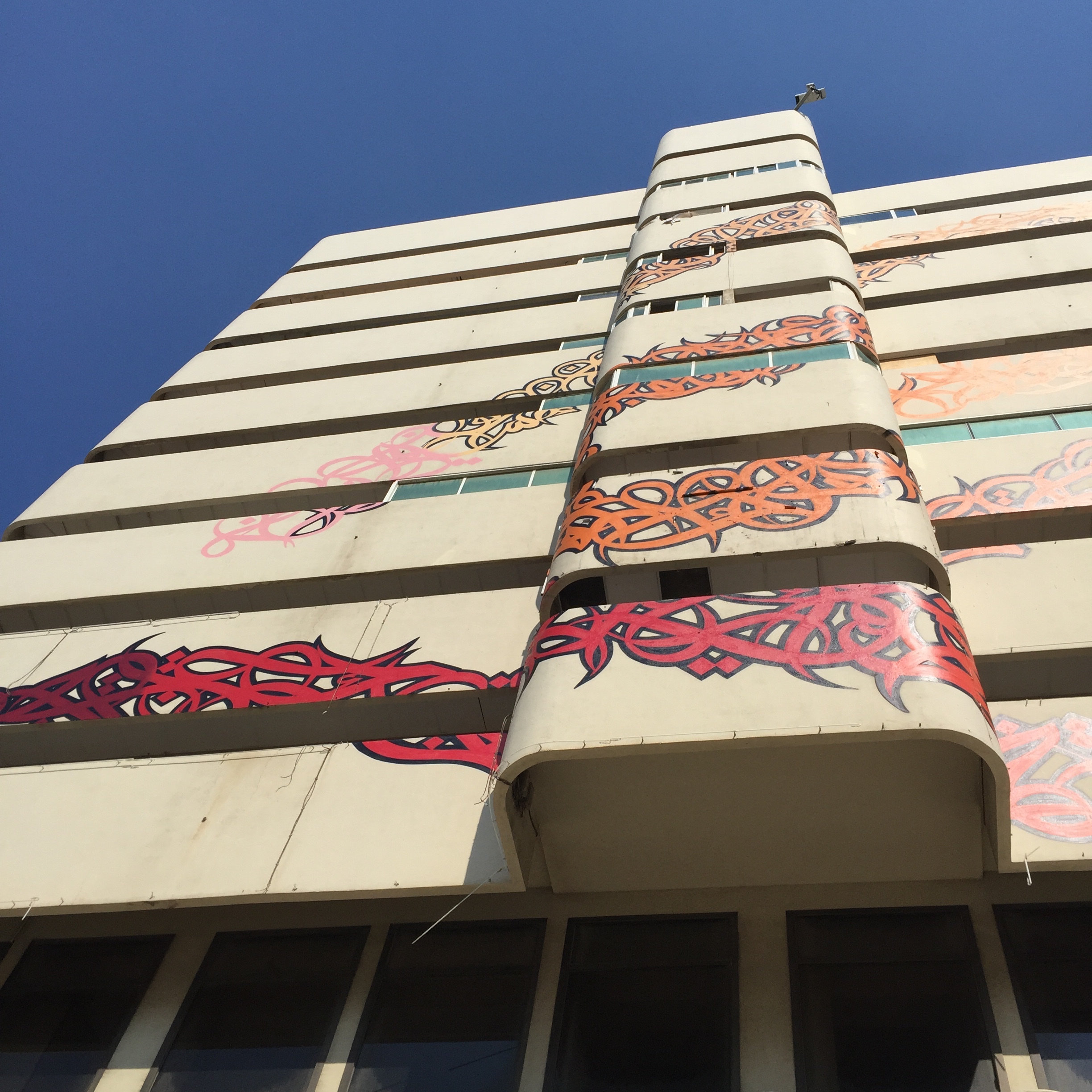Bridging worlds: The Calligraffiti of eL Seed
 Tuesday, January 27, 2015 at 5:34PM
Tuesday, January 27, 2015 at 5:34PM I began my website with a blog entitled “Ahlan Wa Sahlan”.
Through globalization or alienation, many of us find ourselves living in countries other than the ones we were born in. The whole question of identity in a global family needs to be investigated.
Where is home? Is home a place? What does it mean to belong? What is the meaning of family? Who is my family?
These are all questions that invite new interpretation and reflection in the 21st century.
Almost four years later, these questions are as relevant as ever. Added to that it is the fact that more than ever before, there is a need today for fruitful and effective dialogue, not only between individuals, but also between countries, cultures, and ideas.
Such dialogue is possible when we practice respect, tolerance and acceptance in our dealing with others, whether it be in person or via our online communications.
Suspension of judgment and assumptions, as we listen to the other, is crucial. As we do so, we begin to hear the other, over and above the mere words that are being spoken.
Often we see these ideas reflected in the art we are accustomed to, and at other times new art forms themselves call us to look beyond what we hold as truth and broaden our perspectives.
One artist whose work reflects all of this on many levels is eL Seed.
Born in Paris of Tunisian parents, he knows what it is to be confronted with different languages, cultures and identities. He is a street artist whose work blends graffiti and Arabic calligraphy into a style he calls “calligraffiti”. More about him can be found on his website.
For quite some time now I have been following the work of eL Seed via the internet.
Despite not being able to read the Arabic unless I ask for help with translation, I am drawn to the flowing forms and colors of his art, and was happy to read in an interview that,
“Much of my work process is about letting the viewer interact with the letters without necessarily being able to read them.”
It has always been one of my dreams to meet eL Seed, so I was very excited when I discovered via Instagram that he was busy on a project in Sharjah, an emirate about 140 km from Abu Dhabi. Knowing that if I wished to meet him, I needed to make the effort to get there, I immediately called a friend, and together we made our way to Sharjah.

The pictures on Instagram prepared me for the site, which was an abandoned building which will be demolished in two or three years time. Unlike most graffiti artists, eL Seed does not sign his work. He says that while he paints he owns the place but after that it is left for the public and the focus is the content of the message.
As we arrived we were confronted with a huge hydraulic system with a working platform that could be moved around as needed. The platform was being lowered and in it stood eL Seed and his helper. They were about to take a short break!
What a delight it was to meet this artist! He welcomed us and was more than happy to tell us more about his current project. The flowing art making its way up the building was a poem by a 19th century Iraqi poet, Ahmed Bu Sneeda, who lived in Sharjah and who is said to have taught many of the inhabitants calligraphy. The poem was a monologue with a loved one: “I speak to you but you do not reply......”

This monologue was being represented in an artwork which was very much a dialogue which encourages dialogue!
I have often written how social media bridge cyberspace. Social media had helped me meet this artist who through his work was encouraging others to bridge different cultures, languages and ideas. When I later posted a picture of the work in progress, eL Seed thanked me on my post for stopping by!
A consistent theme in his work is our common humanity. In an interview with the Huffington Post, el Seed was asked what messages he hopes to get across with his art. He replied:
“I hope to get across to people that dialogue leads to positive encounters. I always hope to break a few stereotypes or barriers each time I paint.”
One of my favorite pieces has always been a wall he painted in Cape Town in South Africa, my country of birth.
This week I did a bit of research and discovered that translated it is a quote from Nelson Mandela:
“It always seems impossible until it’s done.”
"It always seems impossible until it's done" Nelson Mandela The Calligraffiti Of @elseedart http://t.co/9VEUPkFKvd via @HuffPostArts
— Linda Hollier (@lindahollier) January 27, 2015
You can also see more of this artwork in a slide show I located here.
We are all more connected and interconnected than we realize. I end this blog with a quote from my home page:
“here2here suggests connectivity and hints at interconnectedness.
here2here is a call to acknowledge the other, to broaden our perspectives and widen our embrace.
It is a call for heart and a plea for compassion.”